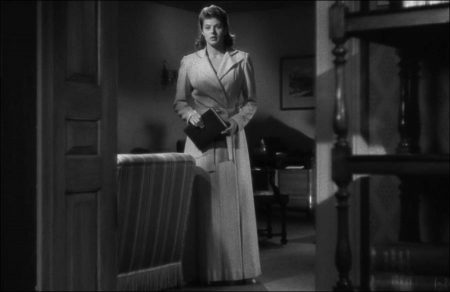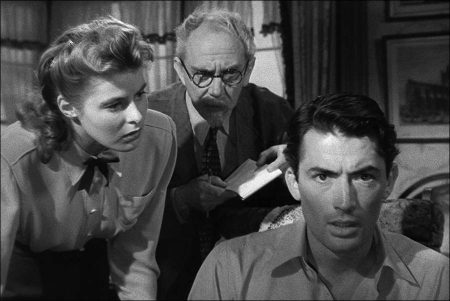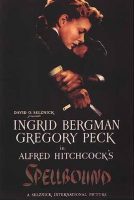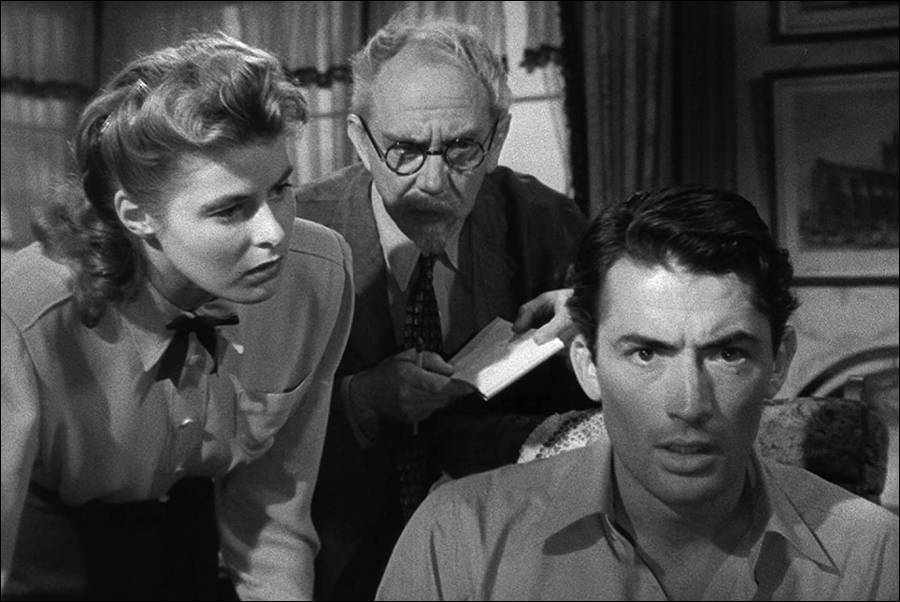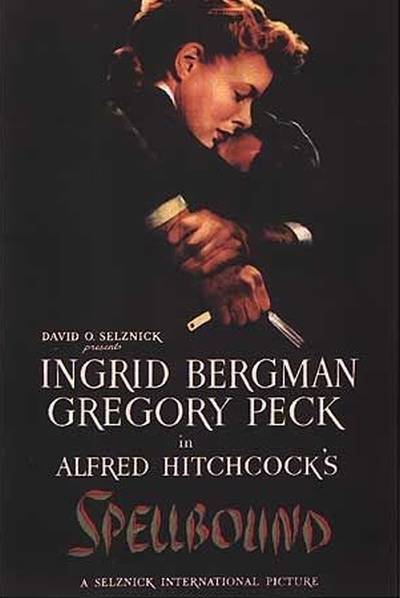Taglines: Strange… Strange… Their irresistible love! Dark… Dark… Their inescapable fears.
Spellbound movie storyline. The head of the Green Manors mental asylum Dr. Murchison is retiring to be replaced by Dr. Edwardes, a famous psychiatrist. Edwardes arrives and is immediately attracted to the beautiful but cold Dr. Constance Petersen. However, it soon becomes apparent that Dr. Edwardes is in fact a paranoid amnesiac impostor. He goes on the run with Constance who tries to help his condition and solve the mystery of what happened to the real Dr. Edwardes.
Spellbound is a 1945 American psychological mystery thriller film noir directed by Alfred Hitchcock. It tells the story of the new head of a mental asylum who turns out not to be what he claims. The film stars Ingrid Bergman, Gregory Peck, Michael Chekhov and Leo G. Carroll. It is an adaptation by Angus MacPhail and Ben Hecht of the novel The House of Dr. Edwardes (1927) by Hilary Saint George Saunders and John Palmer.
Spellbound was made over contract disagreements between Alfred Hitchcock and producer David O. Selznick. Hitchcock’s contract with Selznick began in March 1939, but only resulted in three films, Spellbound, Rebecca (1940) and The Paradine Case (1947). (Notorious was sold to RKO in mid-production.) Selznick wanted Hitchcock to make a movie based upon Selznick’s own positive experience with psychoanalysis. Selznick even brought in his therapist, May Romm, MD, who was credited in the film as a technical adviser. Dr. Romm and Hitchcock clashed frequently.
Further contention was caused by the hiring of surrealist artist Salvador Dalí to conceive certain scenes in the film’s key dream sequence. However, the sequence conceived and designed by Dalí and Hitchcock, once translated to film, proved to be too lengthy and complicated for Selznick, so the vast majority of what had been filmed ultimately was edited out. Two minutes of the dream sequence appear in the final film, but according to Ingrid Bergman, the original had been twenty minutes long.
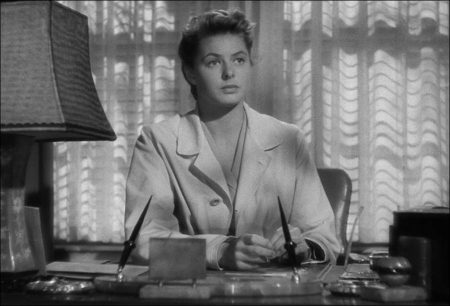
The cut footage apparently no longer exists, although some production stills have survived in the Selznick archives. Eventually, Selznick hired William Cameron Menzies, who had worked on Gone With the Wind, to oversee the set designs and direct the sequence. Hitchcock himself had very little to do with its actual filming.
Spellbound was shot in black and white, except for two frames of bright red at the conclusion, when Dr. Murchison’s gun is fired into the camera. This detail was deleted in most 16mm and video formats but was restored for the film’s DVD release and airings on Turner Classic Movies. Parts of the film were shot in Alta, Utah.
The film features an orchestral score by Miklós Rózsa that pioneered the use of the theremin, performed by Dr. Samuel Hoffmann. Selznick originally wanted Bernard Herrmann, but when Herrmann became unavailable, Rózsa was hired and eventually won the Oscar for his score. Although Rózsa considered Spellbound to contain some of his best work, he said “Alfred Hitchcock didn’t like the music — said it got in the way of his direction. I haven’t seen him since.”
During the film’s protracted post-production, considerable disagreement arose about the music, exacerbated by a lack of communication between producer, director, and composer. Rózsa had scored another film, The Lost Weekend, before Spellbound was released and had used the theremin in that score as well. This led to allegations that he had recycled music from Selznick’s film in the Paramount production.
Meanwhile, Selznick’s assistant tampered with the Spellbound scoring by replacing some of Rózsa’s material with earlier music by Franz Waxman and Roy Webb. The tangled history of the scoring process has been explored by Jack Sullivan (Hitchcock’s Music, 2006) and especially Nathan Platte (Making Music in Selznick’s Hollywood, 2018), both of which qualify and sometimes contradict the early accounts of the participants.
Rózsa’s music achieved great popularity outside the film. Selznick’s innovative use of promotional recordings for radio broadcast made the themes familiar and eventually inspired Rózsa to prepare a full-scale Spellbound Concerto for piano, theremin, and orchestra. This work became a popular staple in the movie concerto genre and has received multiple recordings. Intrada Records made the first recording of the film’s complete score with the Slovak Radio Symphony Orchestra. This album also included music not heard in the finished film.
Spellbound (1945)
Directed by: Alfred Hitchcock
Starring: Ingrid Bergman, Gregory Peck, Michael Chekhov, Leo G. Carroll, Rhonda Fleming, John Emery, Norman Lloyd, Bill Goodwin, Steven Geray, Donald Curtis, Wallace Ford, Art Baker
Screenplay by: Angus MacPhail, Ben Hecht
Production Design by: Fred Ahern, Richard Johnston
Cinematography by: George Barnes
Film Editing by: Hal C. Kern
Art Direction by: James Basevi
Music by: Miklós Rózsa
MPAA Rating: None.
Distributed by: United Artists
Release Date: October 31, 1945 (New York City), December 28, 1945 (United States)
Views: 251
